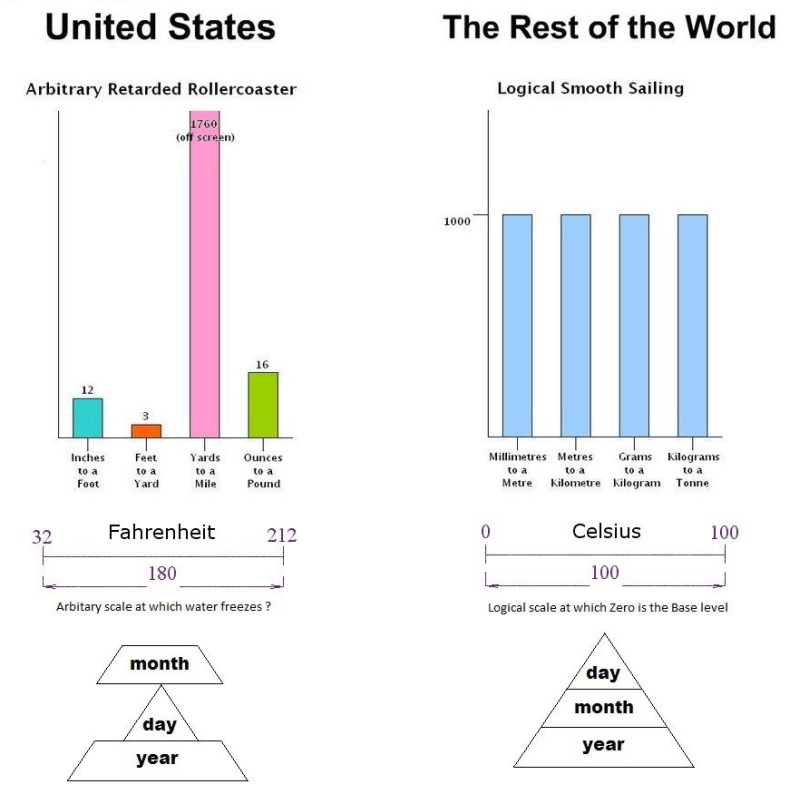And the craziest part is, American customary units are defined by metric. For example, a foot is legally defined as 30.84cm.
Meanwhile, a meter is legally defined as the length of the path traveled by light in a vacuum during a time interval of 1/299,792,458 of a second. Reproducible anywhere, if you have the resources.
